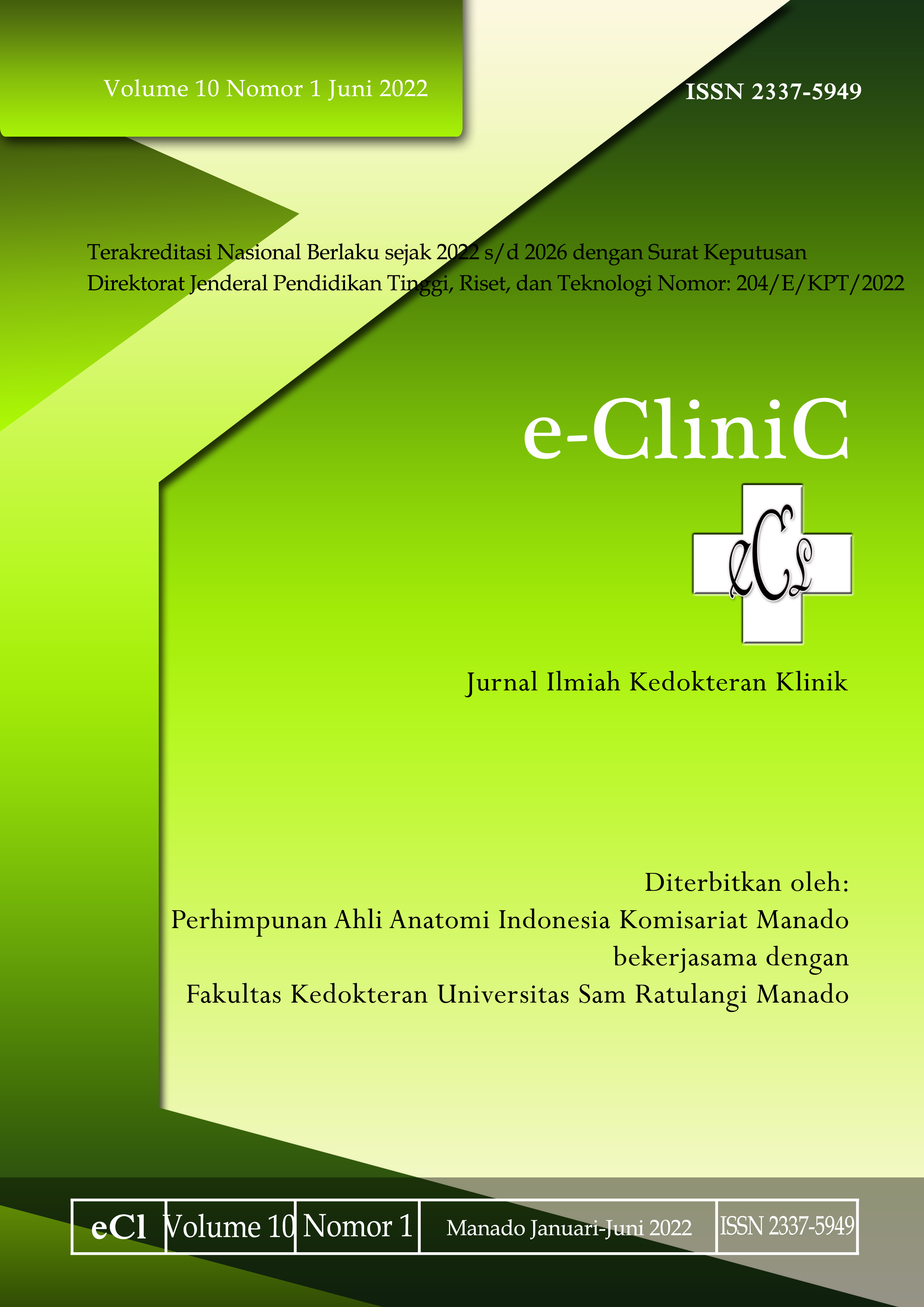Skin Manifestations due to Arthropod Bites and Stings
DOI:
https://doi.org/10.35790/ecl.v10i1.37601Abstract
Abstract: In tropical and subtropical areas, invertebrates that threaten human health are often found inter alia arthropods. Arthropod bites and stings can cause pain and discomfort, severe tissue damage, and even death. This study aimed to determine the skin manifestations caused by arthropod bites and stings. This was a literature review study using two databases, science direct and pubmed.The keywords were arthropods AND bites and stings AND skin manifestation. The results obtained eight articles consisting of four case reports and four research articles. The most common arthropod genus invading human beings were insects and spiders. Skin manifestations were reported as erythema, urticaria, prurigo, papula, and necrotic tissue. Atopic individual showed allergic reaction that could lead to death. Bee and wasp stings were potential to cause anaphylactic reaction that needed emergency care. Arthropod habitat could influence the invasion level and or location of bites and stings. In Europe and United States, the most frequently found were spider bites meanwhile in Asia, the mosquito bites and bee stings. In conclusion, skin manifestations due to arthropod bites and stings are erythema, urticaria, prurigo, papula, and necrotic tissue. In atopic individual, these bites and stings could lead to death
Keywords: arthropod; bites and stings; skin manifestation
Â
Abstrak: Di daerah tropis dan subtropis sering dijumpai hewan invertebrata yang mengancam kesehatan manusia, antara lain golongan artropoda. Gigitan dan sengatan artrropoda dapat menyebabkan rasa sakit dan ketidaknyamanan, kerusakan jaringan yang parah, dan menjadi penyebab beberapa kasus kematian. Penelitian ini bertujuan untuk mendapatkan manifestasi kulit akibat gigitan dan sengatan artropoda. Jenis penelitian ialah suatu literature review dengan menggunakan database science direct dan pubmed. dan kata kunci arthropods AND bites and stings AND skin manifestation. Hasil penelitian mendapatkan delapan literatur, terdiri dari empat laporan kasus dan empat artikel penelitian. Genus artropoda yang paling banyak menginvasi manusia ialah serangga dan laba-laba. Manifestasi kulit yang sering dijumpai berupa eritema, urtikaria, prurigo, papula, dan nekrosis jaringan. Pada individu atopik sering dijumpai reaksi alergi bahkan mengarah kepada kematian. Manifestasi oleh sengatan lebah dan tawon juga berpotensi menyebabkan reaksi anafilaksis yang memerlukan penanganan segera. Habitat artropoda juga berpengaruh terhadap tingkat invasi dan atau lokasi dari gigitan dan sengatan. Di benua Eropa dan Amerika, kasus yang sering dijumpai berupa gigitan laba-laba sedangkan di wilayah benua Asia ialah gigitan nyamuk dan sengatan lebah. Simpulan penelitian ini ialah manifestasi kulit akibat gigitan dan sengatan artropoda berupa eritema, urtikaria, prurigo, papula, dan nekrosis jaringan. Pada individu yang atopik gigitan dan sengatan artropoda dapat berakibat fatal.
Kata kunci: artropoda; gigitan dan sengatan; manifestasi kulit
Downloads
Published
How to Cite
Issue
Section
License
COPYRIGHT
Authors who publish with this journal agree to the following terms:
Authors hold their copyright and grant this journal the privilege of first publication, with the work simultaneously licensed under a Creative Commons Attribution License that permits others to impart the work with an acknowledgment of the work's origin and initial publication by this journal.
Authors can enter into separate or additional contractual arrangements for the non-exclusive distribution of the journal's published version of the work (for example, post it to an institutional repository or publish it in a book), with an acknowledgment of its underlying publication in this journal.
Authors are permitted and encouraged to post their work online (for example, in institutional repositories or on their website) as it can lead to productive exchanges, as well as earlier and greater citation of the published work (See The Effect of Open Access).







